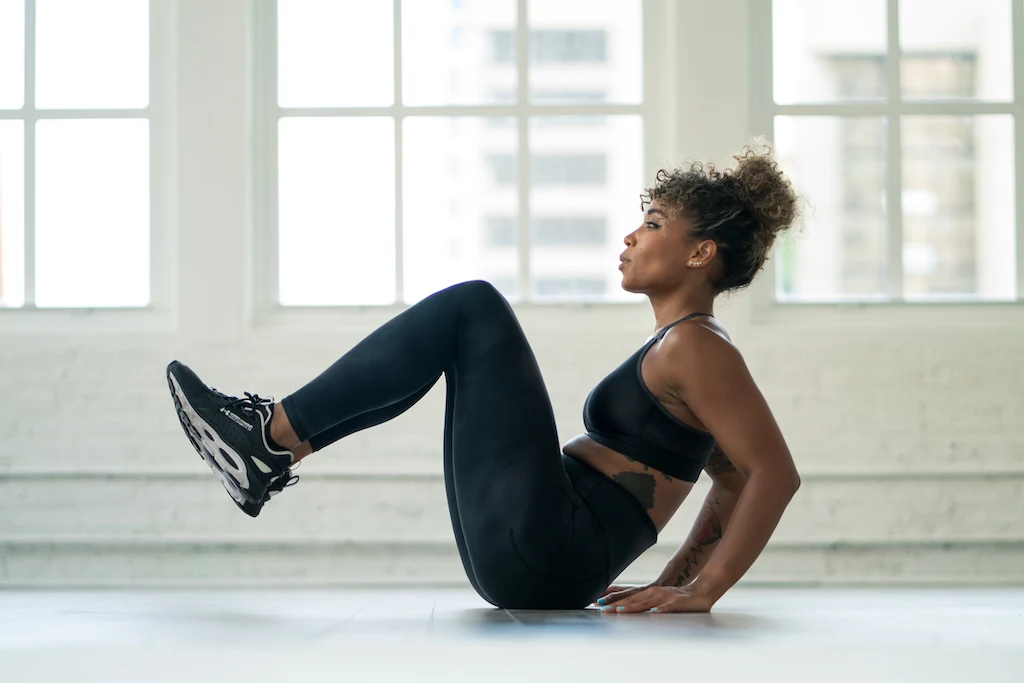How To Break Through A Workout Plateau

August 30, 2019

Are you stuck in a fitness rut and feel like you’ve stopped making progress?
Don’t feel discouraged if you feel like you’ve hit a roadblock on your fitness journey — it happens to all of us! Once you understand how your body adapts to training, you can make changes to your routine to break through the plateau, continue making progress and start enjoying exercise again.
What is a workout plateau?
A workout plateau occurs when your body adjusts to the demands of your workouts. You might start to feel unmotivated, bored, or find you just don’t feel like working out. This is a sign that you may be ready to try a new training style.
Learn more:Which Training Style Is Right For You?
To keep seeing improvements in your strength and fitness, you need to progressively overload your body to keep it changing, adapting and getting stronger.
According to the National Academy of Sports Medicine (NASM), this training principle is also known as muscular hypertrophy.
A hypertrophy workout “consists of exercises utilising low to intermediate repetition ranges with progressive overload.”
Sweat Trainer Kelsey Wells uses hypertrophy training in her PWR programs, where you’ll gradually increase the weight and duration for each exercise over time to help to increase your overall strength and muscle.
It’s normal (and exciting!) for your workouts to feel easier as you get stronger — that’s your cue to dial up your training so that you can keep progressing and avoid a plateau.
NASM suggests you should advance your training every three to four weeks to see steady and consistent results.

Why causes a fitness plateau?
When you first start working out, you usually feel the results straight away, especially if you're working out for the first time or returning to fitness after a break.
However, as time passes and your body adjusts to exercise you may notice the results become less obvious.
People don't always know how to change their training style or increase the intensity and it's easy to become comfortable with a particular routine once you get an exercise habit in place.
Your body is incredibly resilient, and this means it adapts to the physical demands of training.
As your body adapts, exercises that were once challenging become easier. The American Council on Exercise (ACE) in the US says this change is known as “general adaptation syndrome” and it's why you can hit a fitness plateau even when you're doing everything right!
According to ACE, another common reason you might hit a plateau is due to overtraining. Getting proper rest and recovery is just as important for your fitness progress as regular workouts.
Cleveland Clinic in the US says some of the signs you might be overtraining include fatigue, low energy levels, insomnia and even the loss of your period. Other signs include muscle and joint pain and you may find you get sick more easily.
It’s also important to pay attention to what you do between your workouts. You can stop making progress if you don’t get enough rest, don’t drink enough water or don’t eat the right foods to support your training.
What should you do if you hit a plateau?
What you do when you reach a workout plateau will depend on your goals.
For some, a plateau isn’t a problem. If you are happy with where you are on your fitness journey, keep going with your exercise routine to maintain your fitness.
However, if you're frustrated with the lack of progress, there are actions you can take to overcome a fitness plateau.
How to overcome a workout plateau
Use these tips when you feel stuck on your fitness journey.

Make small changes to your routine
When you increase the weight, sets, reps, intensity, the number of sessions completed each week, the amount of rest taken between sets or use variations of exercises, you encourage a “training response” to occur.
Making small changes regularly encourages your body to continue building strength using the same exercises.
Some examples of fitness progression include:
Increase the number of reps of an exercise — if you usually do 10 pushups, try 12 next time
Increase your weights in small increments
Increase the number of exercises you're aiming to complete in a given timeframe
Track your fitness progress
You can’t be sure you’ve hit a plateau unless you're tracking your progress. There are many ways to do this, and it’s best to use more than one method.
Here are some ways to track your fitness:
Record your workouts in a journal — including the number of reps and weights used, as well as how you feel during and after your workout. You can also use the weight-tracking feature in the Sweat app for this!
Use a fitness tracker
Take progress photos
Take a fitness challenge every 4-12 weeks
Tracking your fitness can help you identify whether you're experiencing a plateau and what you can change to overcome it — and using more than one method can help you see where you're still making progress!
For example, if your goal is to lose weight you would know your weight can fluctuate dramatically over a day or a week due to various factors such as water and food intake and even where you’re at in your menstrual cycle.
Therefore, weighing yourself often might not always be a reliable or encouraging indicator of progress. Instead, you could consider whether you are able to lift heavier or do more reps of an exercise than you could before.
It's also common to experience a change in body shape or composition without seeing a significant change on the scales, so taking photos or seeing how your clothes fit can be more helpful if this is a goal for you.

Incorporate strength training
A 2012 article on the “Effects of Strength Training on Health” published in the Current Sports Medicine Reports found resistance training has a number of benefits on our mental and physical health.
It improves your strength, endurance and skeletal muscle size while protecting your joints from injury during other activities. Building muscle can also help boost your metabolic rate.
Other benefits of resistance training include promoting your cardiovascular health, particularly when included in a well-rounded fitness program alongside cardio workouts, such as with high-intensity resistance training or low-intensity cardio.
As a result of some of these benefits, strength training might also help you achieve other goals such as running faster and feeling more confident.
Focus on nutrition
Nutrition plays an important role in helping you reach your health and fitness goals, and to keep improving, you need a nutrition plan that supports your training. This means getting enough protein, carbohydrates, healthy fats and the micronutrients you need to build muscle and recover quickly.
Establishing healthy eating habits will help you get the maximum benefit from your workouts.
Drink more water
Good hydration plays a critical role in muscle performance and recovery. According to an article published by The Association of UK Dietitians, water in the body also plays an essential role in your heart health and digestive system. Mild dehydration can even cause headaches and poor concentration.
If you don’t drink enough water, there are other ways to stay hydrated including drinking herbal tea, grabbing a green smoothie and including water-dense fruits and vegetables like cucumber, tomatoes and melon in your diet.
But the easiest way to make sure you’re hydrated is by drinking two to three litres every day — or you might need more if you’re physically active.

Make time for rest
Rest days allow you to take a break from training and let your body to recover. According to ACE, during rest your body begins to replenish its energy stores and repair the muscle tissue used during your workouts. This will ultimately help your muscles grow and become stronger.
All Sweat programs include a rest day each week. This isn’t something to feel guilty about — use it as an opportunity to catch up with friends, spend time with your family, read a book or watch TV — whatever you enjoy! You may find that after taking a rest day you have more energy for your next workout and your performance improves.
Getting enough sleep is also critical for your recovery. If you have interrupted sleep for any reason, it’s okay to back off your workout intensity until you can get some good shut-eye and are feeling fully rested.
Use progressive overload
Progressive overload is a training principle that means you gradually increase the stress placed on your body during your workouts so your body has to keep adapting.
It’s important to use progressive overload in a safe way to avoid injury or overtraining, such as following one of the Sweat programs or a workout program designed by a personal trainer with expertise in getting the results you want.
You can avoid a workout plateau by choosing a training style you enjoy!
Doing exercise that you enjoy is key to leading a healthy lifestyle and long-term results!
When your exercise program fits your lifestyle, you’ll find it much easier to maintain — and knowing when it’s time to intensify or take a break from your training will help you to keep seeing results and steer clear of a plateau.
How have you overcome a workout plateau? Let us know in the comments below!

A more empowered you starts with Sweat, and our editorial team is here to bring you the latest fitness tips, trainer recommendations, wellbeing news, nutritional advice, nourishing recipes and free workouts.
* Disclaimer: This blog post is not intended to replace the advice of a medical professional. The above information should not be used to diagnose, treat, or prevent any disease or medical condition. Please consult your doctor before making any changes to your diet, sleep methods, daily activity, or fitness routine. Sweat assumes no responsibility for any personal injury or damage sustained by any recommendations, opinions, or advice given in this article.
Fitness